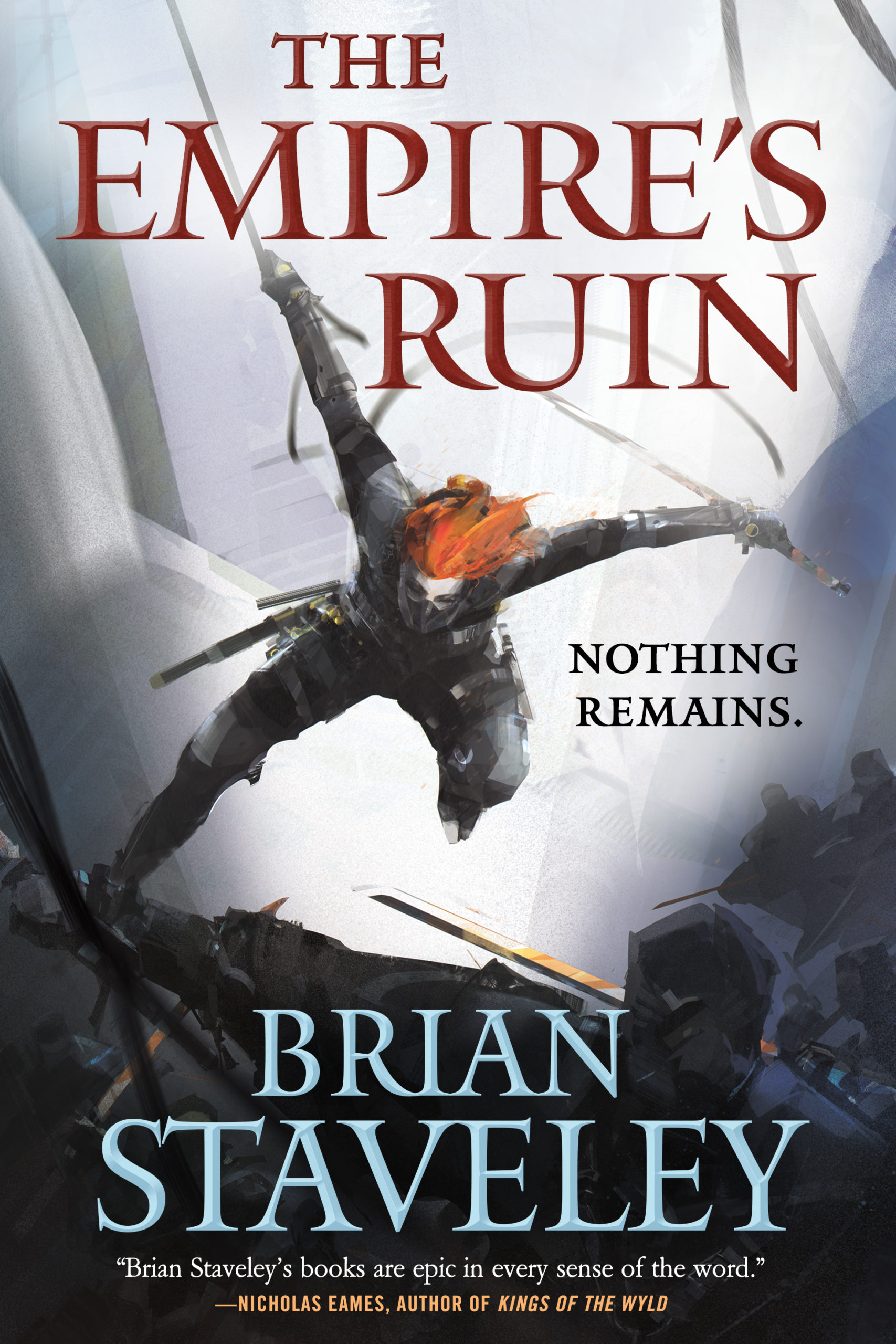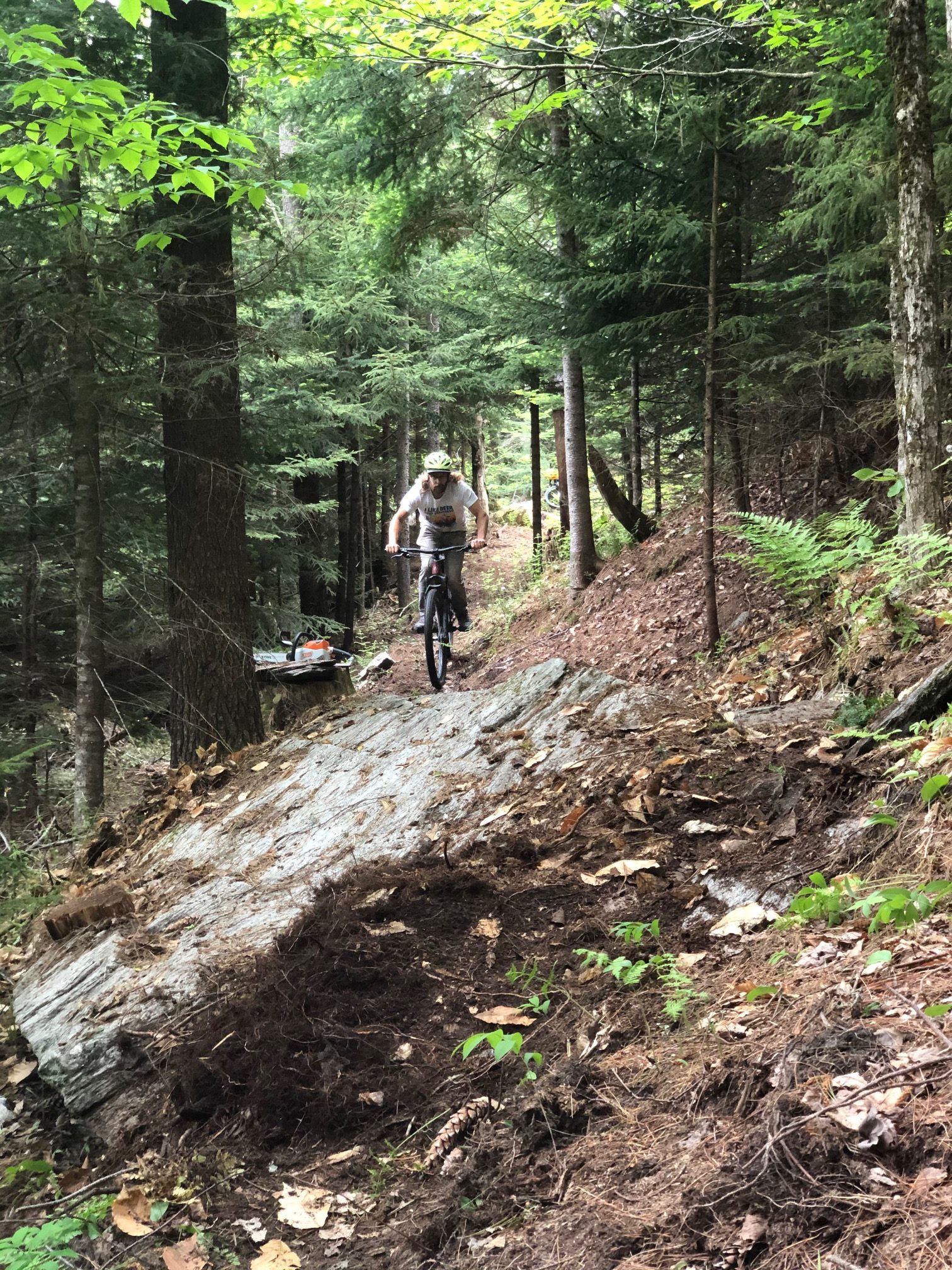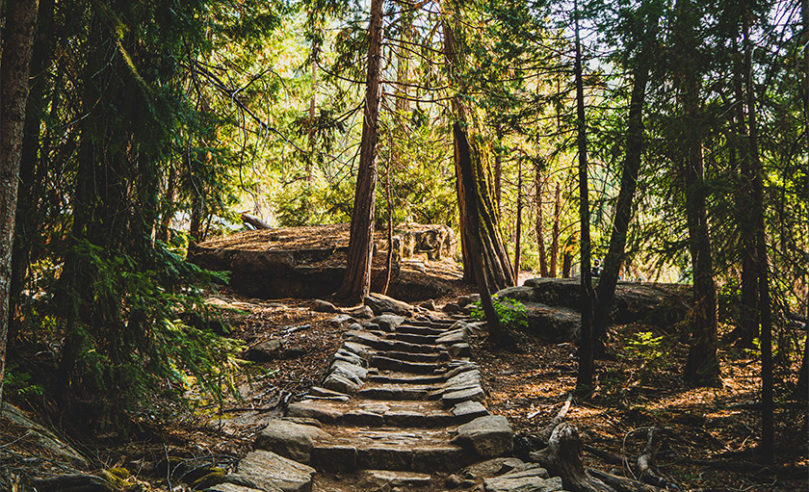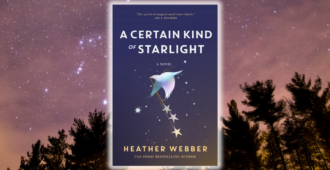 What does trail building have to do with world building? Brian Staveley, author of The Empire’s Ruin, joins us today to talk about the world building process for his new series and how trail building in real life translated to his fiction writing. Check it out here!
What does trail building have to do with world building? Brian Staveley, author of The Empire’s Ruin, joins us today to talk about the world building process for his new series and how trail building in real life translated to his fiction writing. Check it out here!
By Brian Staveley
“The thing about this rock,” my son said, eyeing the four-foot outcropping critically, “is that it’s in the wrong place.”
On the one hand, it was a strangely normative comment. There is no “ought” to the existence of Vermont’s stone ledges; they are where they are, where geology formed them, and that’s that. Until you start building a mountain bike trail.
Professional trail builders spend days or weeks scouting their terrain before they start cutting or digging. My son and I are not professional trail builders, and so we busted out the saw on day one and just went at it. In this, my trail building technique resembles my approach to writing a novel, a fact that I find more than a little distressing, given that I am a professional writer.
And I recognized that ledge. Not that particular stone at that place in the forest, of course, but the feeling of having arrived—through a combination of excitement, recklessness, and non-existent planning—at an obstacle I had no idea how to deal with. This happens all the time when I’m writing.
Take my newest book, The Empire’s Ruin. I really wanted to write about a soldier, a soldier who has made horrible mistakes, mistakes that led to the deaths of people she loved. Fine, great, yes. Fire up the chainsaw! Opening chapter: death, dismemberment, fire. Second chapter: dawning consequence, horror, regret. Third chapter: demotion, dread, self-loathing, emotional shuttering. Fourth chapter: ledge.
I’d written myself into a situation I didn’t know what to do with. I’d put my soldier—her name is Gwenna—in a situation where she couldn’t plausibly take any real action at all. She was just too broken. But very few fantasy readers want to read a 300,000 word book about a soldier who can’t make herself get out of bed. My choices felt unappealing. I didn’t want to soften the start because that’s what I’d been excited to write in the first place. I didn’t want to have her make a quick recovery because that felt dishonest and, I was starting to realize, because I also wanted to write about a brave, capable person who was facing the abyss—depression, anxiety, PTSD. You can’t face the abyss properly in two or three chapters. But I also, also wanted to write a rocking adventure novel with quests and monsters and abandoned cities.
My days out on the trail hacking at the dirt and building bridges offered some lessons here.
 First: The run-in and exit from any obstacle are just as important as the obstacle itself. An easy bridge over a ravine becomes much more intimidating if you need to take a hard turn over big roots immediately before it. A little drop doesn’t look so little if the landing is total garbage. Sometimes, the solution to an obstacle isn’t to change the obstacle, but what’s around it. In the case of Gwenna, this meant all kinds of things: finding the right supporting characters, finding the right geographical setting, finding the right challenges for her to face, and deploying them at the right time. Getting that order right took months, but it allowed me to keep the central struggle and have my globe-spanning adventure story.
First: The run-in and exit from any obstacle are just as important as the obstacle itself. An easy bridge over a ravine becomes much more intimidating if you need to take a hard turn over big roots immediately before it. A little drop doesn’t look so little if the landing is total garbage. Sometimes, the solution to an obstacle isn’t to change the obstacle, but what’s around it. In the case of Gwenna, this meant all kinds of things: finding the right supporting characters, finding the right geographical setting, finding the right challenges for her to face, and deploying them at the right time. Getting that order right took months, but it allowed me to keep the central struggle and have my globe-spanning adventure story.
Second: Little details make a big difference. Placing a single flat rock just before a large root can take a section of trail from slow and ugly to quick and smooth. When I’m faced with a chapter that looks like it needs to be scrapped and rewritten, I’ve learned to look first to see if there are any smaller changes I can make: a shift to the dialogue, a pause for reflection, an additional beat to the fight choreography. It doesn’t always work, but it works more often than I expect!
Third: Laziness shows. You can’t half-ass your way through an obstacle. Skip the steps above and you’re going to have a little junky section in the middle of your trail, something that’s not just poorly conceived but also miserably executed. There’s probably going to be some digging, some bench cutting, some hauling of stones and dirt, which is all good. If you didn’t want to haul stones, you probably wouldn’t be building a trail. Sometimes, though, on a hot, tired day, it’s tough to remember that this is what you signed up for. Same with books.
And fourth: Not every trail is for every rider. Not every book is for every reader. At some point you have to commit to making the thing you want to make. Some bikers want fast downhill flow. Others want to struggle over janky, old-school, half-collapsed bridges. Some want both! Some want neither! There are no right answers here, and fortunately the world is filled with books and trails. My son and I could have built around that ledge, but we’d come to like the ledge. Of the people who’ve come out to ride it, some think the feature is awkward and uncomfortable, others think it’s fun. It’s the same way with books, and as a writer, that’s a very liberating thing to remember.
Brian Staveley has an MA in Creative Writing from Boston University. He works as an editor for Antilever Press, and has published poetry and essays, both in print and on-line. He is the author of The Emperor’s Blades. The Empire’s Ruin is on sale from Tor Books now.
Buy The Empire’s Ruin here:












Now to go and google what a trail builder is.
Okay, follow up question after reading about trail building:
Do Brian Staveley own a forest?
I started reading “The Empire’s Ruin,” got as far as when you killed off every damned darling, and had to put it down for a week.
You really know how to crush a heart, I’ll give you that.
I’m back in it and I’m loving it. Of course. I just had to grieve a little.